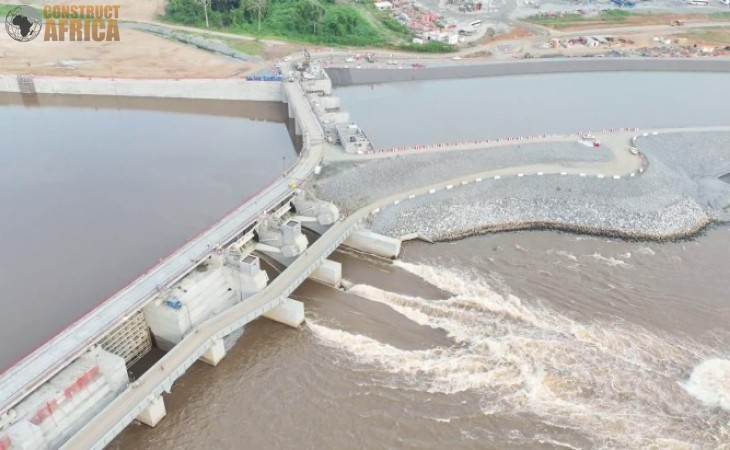The construction of Cameroon’s 420MW Nachtigal hydropower project passes a major milestone with the filling of the reservoir. Gaston Eloundou Essomba, the country’s Minister of Water and Energy, closed the dam’s valves, officially marking its impoundment.
The primary civil works are being carried out by Belgium’s BESIX, France’s NGE Contracting, and Morocco’s SGTM, and they reached 87% completion in June. The reservoir will generate electricity via a power station outfitted with six turbines of 60 MW each, totaling 420 MW. Nachtigal will be Cameroon’s largest hydroelectric scheme when completed in 2024, capable of generating 30% of the Central African country’s electricity. The project is a public-private partnership (PPP) that entered the construction phase in 2019. The Nachtigal Hydropower Project is the next step in the government’s quest to provide more electricity to its citizens.
Also Read: The fishing component of the Nachtigal Hydropower project in Cameroon set for implementation
Cost of the Nachtigal hydropower project
The total cost of the project is expected to be €1.2 billion. Loans from 15 development finance organizations are financing 76% of the project including AFD. As well as AfDB, IFC, EIB, British International Investment (BII), and the Opec Fund for International Development (OFID). When completed, it will provide 30% of Cameroon’s power demand. Nachtigal Hydro Power Company (NHPC) is developing the independent power project under a 35-year concession.
The dam on the Sanaga River, 70 kilometers northeast of Yaoundé, is 1.5 kilometers long. And 14 meters high, with a 3.3-kilometer headrace channel. In addition, a 50-kilometer-long power transmission line has already been built to connect the plant to the grid.
Furthermore, the Nachtigal hydropower project is one of Sub-Saharan Africa’s rare public-private partnerships (PPP) in hydropower. PPPs are a financing strategy that aligns with the World Bank’s focus on Maximizing Finance for Development (MFD), leveraging the private sector, and optimizing the use of finite public resources.

Leave a Reply